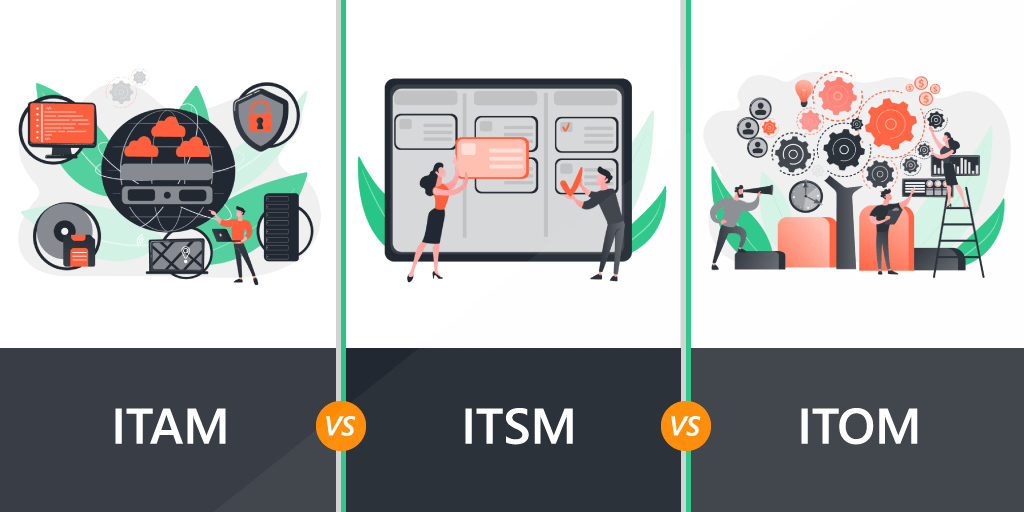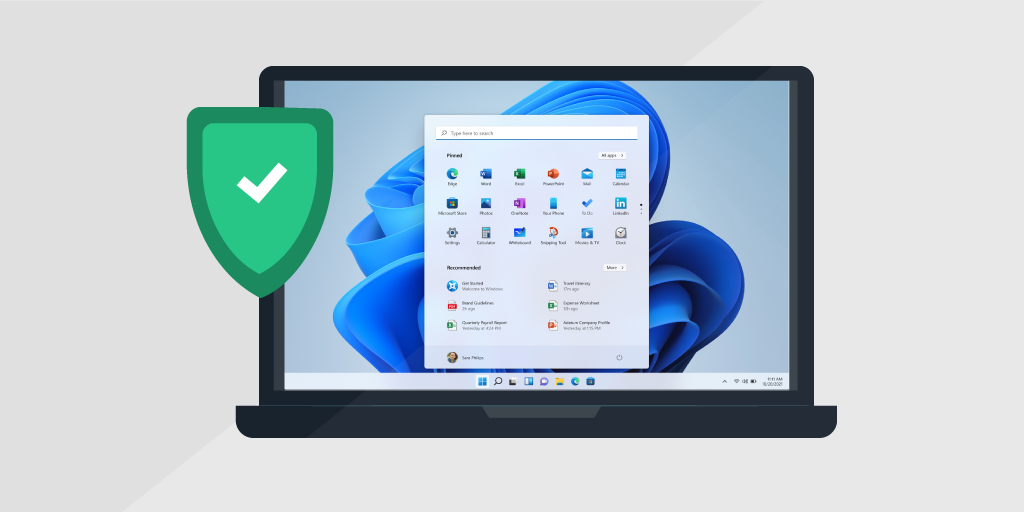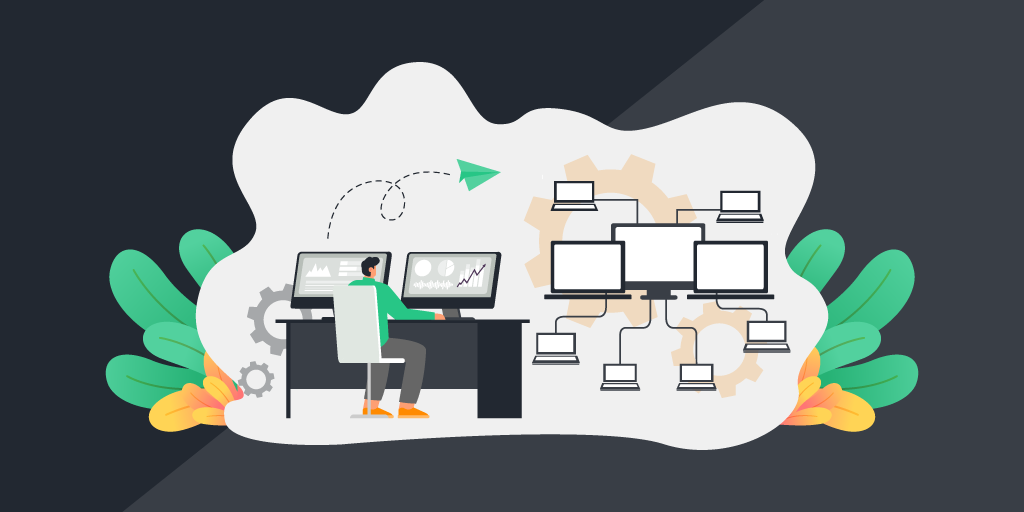
IT professionals are bombarded with acronyms, and with so much overlap between the various IT disciplines, it’s no wonder we get confused! In this blog post, we’ll define three key IT practices, explore their differences, and talk about one critical thing they have in common — a reliance on complete and accurate IT asset data.
What is ITAM?
ITAM stands for IT Asset Management. It’s the process of accounting for all of the assets that comprise your IT infrastructure, including all hardware such as servers, routers, gateways, end-user devices, operational technology, and internet-connected devices (IoT) that are connected to your network, and software running on those devices. ITAM encompasses processes for deploying, maintaining, upgrading, and disposing of IT assets, and tracking and monitoring the usage of those assets throughout their lifecycle.
Effective ITAM is particularly critical today, as the IT estate continues to expand due to the acceleration of trends such as digital transformation and mobility. A solid ITAM strategy helps organizations manage and optimize the costs associated with their IT infrastructure, and maximize the ROI of IT investments by ensuring resources are appropriately allocated. By tracking hardware and software usage, they can reduce licensing and support costs, and enforce compliance with policies and regulatory requirements. Effective ITAM can also reduce waste by eliminating shadow IT and idle devices.
Additionally, today’s hybrid workplace means employees are accessing corporate resources remotely, potentially using unauthorized or unprotected devices that can introduce vulnerabilities into the network. ITAM helps to ensure all IT assets are deployed with the proper security protocols and protections in place.
ITAM begins with the process of collecting a complete and accurate IT asset inventory — and the more granular the data, the better. This data can be used to make informed decisions about hardware and software purchases, resource allocation, policy enforcement, IT governance, and more.
What is ITSM?
While ITAM refers to the management of hardware and software assets connected to a network, ITSM — or IT Service Management — is how IT teams to manage the delivery of IT services to users, to meet an organization’s IT needs. ITSM includes all of the tasks related to designing, creating, delivering, and supporting IT services. Use cases for ITSM include change management, configuration management, capacity planning, configuration management, and disaster recovery, to name a few.
ITSM often leverages IT Infrastructure Library (ITIL), a framework that describes the service lifecycle model and provides structured processes and best practices for effective management at each stage. Other frameworks that can be leveraged for ITSM include Center for Internet Security (CIS) Controls, COBIT, ISO/IEC 20000, and Microsoft Operations Framework.
ITSM helps to standardize IT processes, thereby reducing IT costs and risk. By managing the delivery of IT services in an organization via repeatable, standardized workflows, ITSM can improve IT governance and ensure the business has the IT resources it needs to function.
IT service management (ITSM) is more efficient when you have access to accurate, up-to-date data in your CMDB. But CMDB often lacks direct integrations to ITSM tools, requiring service teams to commit in-house resources to build custom integrations – or be forced to make decisions based on incomplete, outdated, and often inaccurate data.
While ITAM focuses on managing the financial, contractual, and logistical aspects of an IT asset throughout its lifecycle, ITSM focuses on service delivery. Since ITSM solutions are designed to support user requests for IT services, it’s advantageous when they can integrate with ITAM solutions. Through this integration, ITAM solutions provide the information ITSM solutions need to fulfill service requests.
What is ITOM?
Here’s where it gets a little confusing!
The key phrase for ITOM — or IT operations Management — is Service Operation. Technically speaking, ITOM is a subset of ITSM, and therefore also covered under ITIL. ITOM focuses on carrying out the daily tasks of operating the IT infrastructure, including all technology and applications. These tasks comprise the Service Operation processes of the IT service lifecycle, which, according to the ITIL v3, include:
- Application Management
- Change Management
- Operations Management
- Control processes and function
- Scaleable practices
- Measurement and control
Whereas ITSM focuses on how services are delivered to customers, ITOM monitors events and performance, and the processes IT uses to manage their internal activities.

What’s the Common Denominator? In a Word: Data
In order for ITSM and ITOM to be effective, IT teams need access to complete and accurate IT asset data. For this reason, ITAM is an essential stepping stone to the other two disciplines, because it involves creating a detailed IT asset inventory of all of the hardware, software, and other network assets that comprise the IT estate. Without this data, effective ITSM and ITOM are impossible. How can you fulfill service requests or ensure continuous and reliable service operation if you have no information about where assets are located, who’s using them, whether or not they need upgrades or other critical insights into the current state and health of your IT assets?
That’s why all the key IT governance frameworks — CIS, COBIT, ITIL, and ISO — specify the process of creating a complete and accurate IT asset inventory as a core and essential activity. If you don’t know what IT assets you have, you can’t possibly manage or protect them.
Start with IT Discovery
For effective ITSM and ITOM to take place, it’s absolutely critical that organizations know their IT. But nearly a third of organizations report that they don’t know what assets they have, where they’re located, or who’s using them.
A comprehensive solution for IT Discovery, IT inventory, and IT analytics, Lansweeper automates the process of creating and maintaining an always-accurate IT asset inventory. It eliminates time-consuming manual tasks while ensuring IT teams have access to up-to-the-minute detailed information about every asset connected to the network. In this way, Lansweeper helps organizations build the data foundation for a modern, well-managed IT organization while streamlining and simplifying all of the processes encompassed in ITAM, ITSM, and ITOM.
Read about our use cases and integrations, or start a free trial of Lansweeper today.


